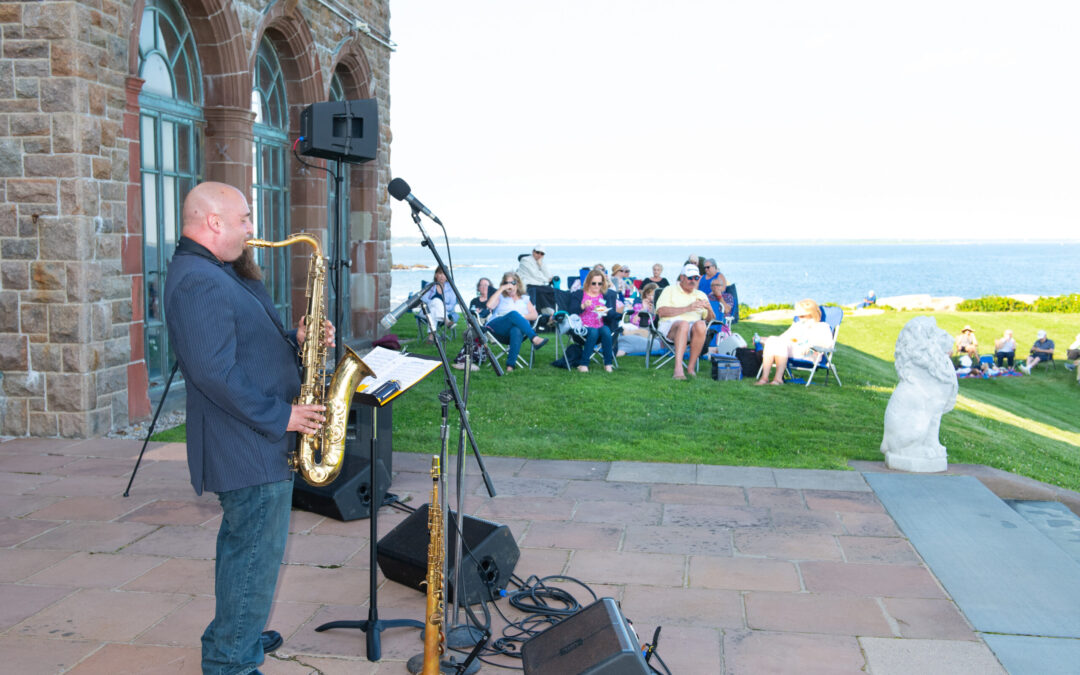
by NRF User | Jun 29, 2021 | NRF News
Newport Restoration Foundation is excited to be able to continue in-person programs and events at our museums this season. Rough Point Museum, Whitehorne House Museum, and Prescott Farm will offer a variety of free and ticketed programs for all ages and interests. Please mark your calendars for upcoming special events including:
Summer Stories
Whitehorne House Museum (416 Thames Street, Newport)
Fridays: July 2, 9, 16, 23, 30 / 10:00 – 11:00 AM
Free admission
Listen to storybook readings in the garden and put together a themed craft to take home. Recommended for kids aged Pre-K to 1st grade.
Picnic Performances at Rough Point: The Rhode Island Black Storytellers
Rough Point Museum (680 Bellevue Avenue, Newport)
July 2 / 6:00 – 7:30 PM
$15 – Advance registration recommended
Join us for our monthly outdoor art performance series on the grounds of Rough Point. In July, the Rhode Island Black Storytellers take the stage at Rough Point for a series of independence-themed stories set to music. Visitors can lounge on the grass amongst the blooms in the Formal Garden, or bring blankets, chairs, or pillows to relax. Grounds open at 6:00pm, performance begins at 6:30pm.
Woodcarving Demonstration
Whitehorne House Museum (416 Thames Street, Newport)
July 10 / 2:00 – 3:00 PM
$30 – Advance registration recommended
Mary May, founder of Mary May’s School of Traditional Woodcarving, leads a woodworking demonstration in the garden at Whitehorne House Museum. Discover how Newport’s distinct block-and-shell patterns are carved, seen on a number of 18th-century furniture pieces inside the museum.
Second Sundays
Prescott Farm (2009 West Main Road, Middletown)
July 11 / 12:00 – 3:00 PM
Free admission
Each month, NRF joins with a non-profit partner to highlight the expansive history and horticulture of Prescott Farm. In July, the crew of the SSV Oliver Hazard Perry visits to demonstrate the surprising connections between ships and windmills (hint: it’s all in the sails!).
Jazz on the Lawn
Rough Point Museum
July 15 / 6:30 – 8:00 PM
$20 – Advance registration recommended
Grab a picnic basket and blanket, and take in the ocean breezes while the Leon Lee Dorsey Quartet jams on the Rough Point terrace.
Historical Makerspace Workshop: Paint Making
Whitehorne House Museum (416 Thames Street, Newport)
July 25 / 11:00 AM – 12:00 PM
$20 – Advance registration recommended
Kids from 10-100 are welcome at this fun paint making workshop outside of Whitehorne House. Discover how people have made paint throughout history using a variety of sources to create different colors and textures, then make your own painted masterpiece in this hands-on program.
Roam Around Rough Point
Rough Point Museum (680 Bellevue Avenue, Newport)
July 31 / 5:00 – 7:00 PM
$0-$20; Newport County Residents are free!
On the last Saturday of every month, explore the house and gardens after hours. Newport County residents receive FREE admission! For more info visit newportrestoration.org/events.
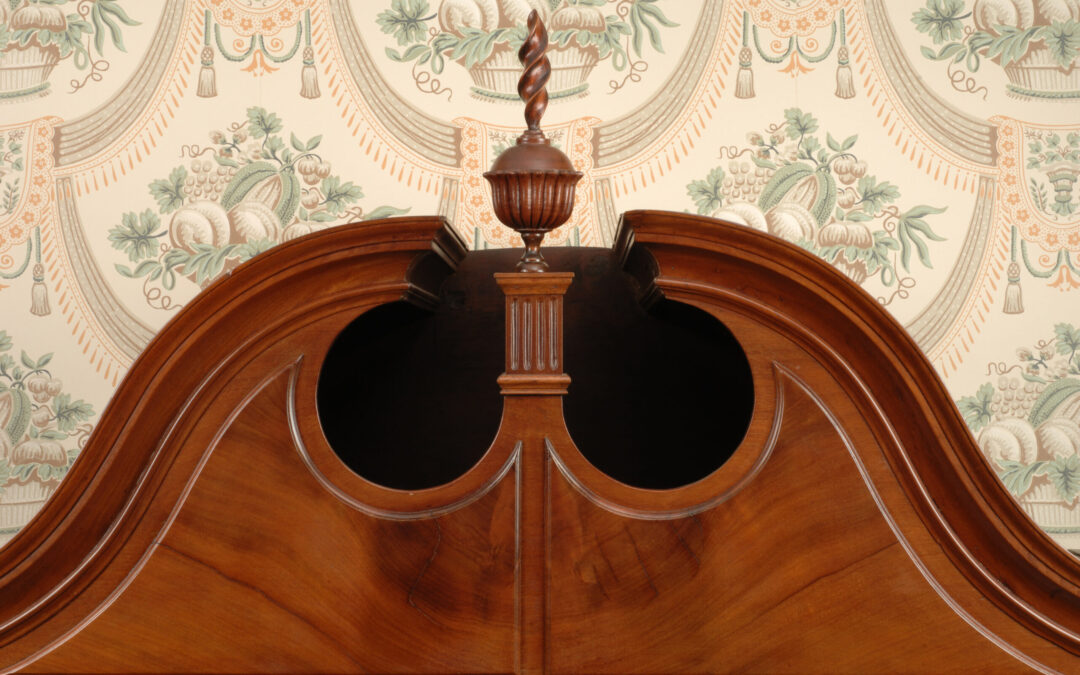
by NRF User | Jun 14, 2021 | NRF News
Join the Newport Restoration Foundation and its Whitehorne House Museum for a series of online discussions that explore why Americans routinely seek inspiration from the material culture and personalities of British, colonial America. In other words, “Why do we return to the Colonial Revival?”
Beginning at 7:00 pm, every Wednesday night in July, we will host a variety of scholars, artisans, and museum professionals to discuss the profound impact 18th century aesthetics and history had and continue have on American culture.
July 7th 7:00 pm Discussion: Creating Antiques
Briann Greenfield, Ph.D., the Director of Preservation and Access at the National Endowment for the Humanities and the author of Out of the Attic: Antiques in 20th Century New England, and Erica Lome, Ph.D., historian and the Peggy N. Gerry Curatorial Associate at the Concord Museum will discuss the ways in which a group of early 20th century immigrants helped create the American antique business, spurring interest in 18th-century American furniture and other material culture.
July 14th 7:00 pm Discussion: Reviving Colonial Furniture
Steven Brown, a former member of the cabinet and furniture making faculty for 21 years at the North Bennet St. School in Boston, and Mickey Callahan, the co- founder and past president of the Society of American Period Furniture Makers will discuss why they find inspiration and excitement in recreating the forms and styles of 18th-century American furniture.
July 21st 7:00 pm Discussion: Comparative Revivals
Dennis Carr, the Virginia Steele Scott Chief Curator of American Art at the Huntington Library, Art Museum and Botanical Gardens, Elizabeth Humphrey, former Curatorial Assistant and Manager of Student Programs at Bowdoin College Museum of Art and PhD student, Art History, University of Delaware, and Lydia Mattice Brandt, Ph.D., Associate Professor of Art History at the University of South Carolina, will compare a variety of aesthetic revivals in American life, and consider their significance, from Southern California’s famed Mission Revival, to the Moorish Revival of the late 19th and early 20th centuries, and the 20th and 21st century revivals of Colonial Southern architecture and material culture.
July 28th 7:00 pm Discussion: Revivals in Practice
Ruth Taylor, the Executive Director of the Newport Historical Society, and Reginald Richard, an actor in the Washington, D.C. area and an interpreter at George Washington’s Mt. Vernon will join NRF staff to discuss the practical realities and challenges of interpreting 18th-century American life.
RSVP required – please respond to Dr. Erik Greenberg by Friday, July 2nd at erik@newportrestoration.org to receive free access to the online discussions.
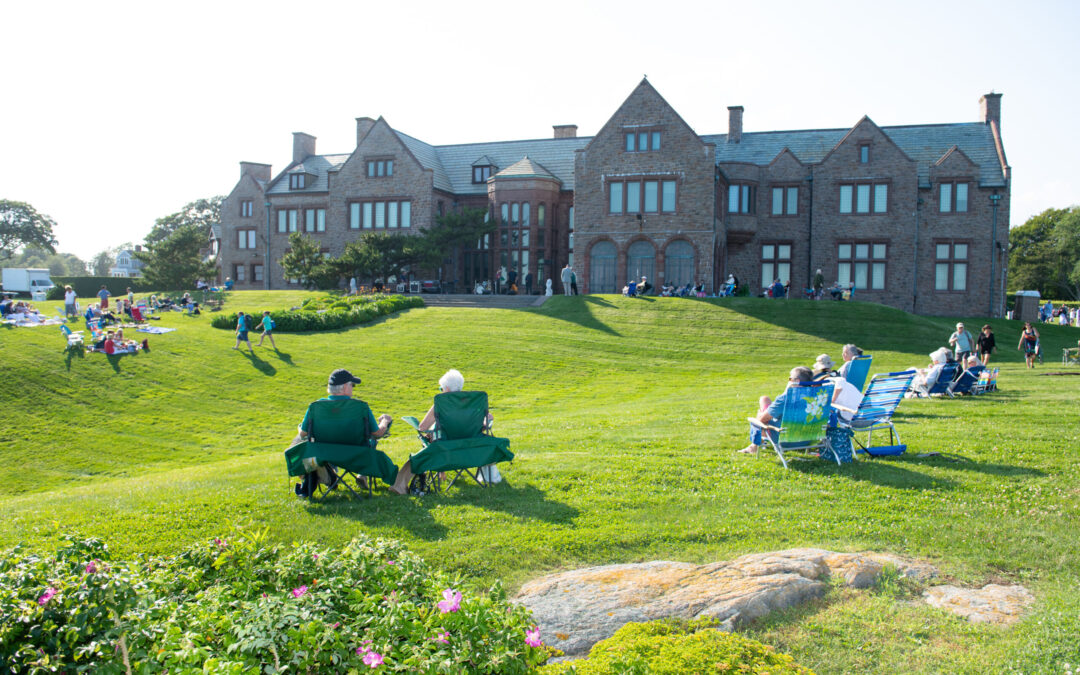
by NRF User | Jun 2, 2021 | NRF News
Newport Restoration Foundation is excited to be able bring both virtual and in-person programs and events back to our museums this month! Rough Point Museum, Whitehorne House Museum, and Prescott Farm will offer a variety of free and ticketed programs for all ages and interests. Please mark your calendars for upcoming special events including:
Virtual Jazz in the House
Youtube
June 2 / 7:00 PM / Free
You’re invited virtually to Rough Point for a special jazz concert! In Doris Duke’s lifetime, music often filled the halls of her Newport home, and NRF is excited to bring jazz music back into the house for this filmed performance featuring Leon Lee Dorsey, Greg Skaff, and Mike Clark playing interpretations of tunes by jazz titan Thelonious Monk.
Summer Stories
Whitehorne House Museum (416 Thames Street, Newport)
Fridays: June 4, 11, 18, 25 / 10:00 – 11:00 AM
Free admission
Listen to storybook readings in the garden and put together a themed craft to take home. Recommended for kids aged Pre-K to 1st grade.
Picnic Performances at Rough Point: Poetry Reading by Tina Cane
Rough Point Museum (680 Bellevue Avenue, Newport)
June 4 / 6:00 – 7:30 PM
$15 – Advance registration recommended
Join us for our monthly outdoor art performance series on the grounds of Rough Point. In June, Rhode Island’s Poet Laureate, Tina Cane, brings her poetry to Rough Point for a reading from her recently published works. Visitors can lounge on the grass amongst the blooms in the Formal Garden, or bring blankets, chairs, or pillows to relax. Grounds open at 6:00pm, performance begins at 6:30pm.
Second Sundays
Prescott Farm (2009 West Main Road, Middletown)
June 13 / 12:00 – 3:00 PM
Free admission
Each month, NRF joins with a non-profit partner to highlight the expansive history and horticulture of Prescott Farm. In June, the Audubon Society of Rhode Island will share what they know about the beautiful birds that live all around us through hands-on activities and crafts; all questions and bird stories welcome!
Woodcarving Demonstration
Whitehorne House Museum (416 Thames Street, Newport)
June 19 / 2:00 – 3:00 PM
$30 – Advance registration recommended
Steve Brown, experienced woodworker and professor at the North Bennet Street School, leads a woodworking demonstration in the garden.
Roam Around Rough Point
Rough Point Museum (680 Bellevue Avenue, Newport)
June 26 / 5:00 – 7:00 PM
$20 / Students with ID: $12 / Newport County Residents FREE
On the last Saturday of every month, explore the house and gardens after hours. Newport County residents receive FREE admission! For more info visit newportrestoration.org/events.
Historical Makerspace Workshop
Whitehorne House Museum (416 Thames Street, Newport)
June 27 / 11:00 AM – 12:00 PM
$20 – Advance registration recommended
Discover how 18th-century students learned geography through needlework, then make your own embroidered map of Newport. Kids 10 – 100 welcome!
For more information on events and to purchase tickets, visit www.newportrestoration.org/events.
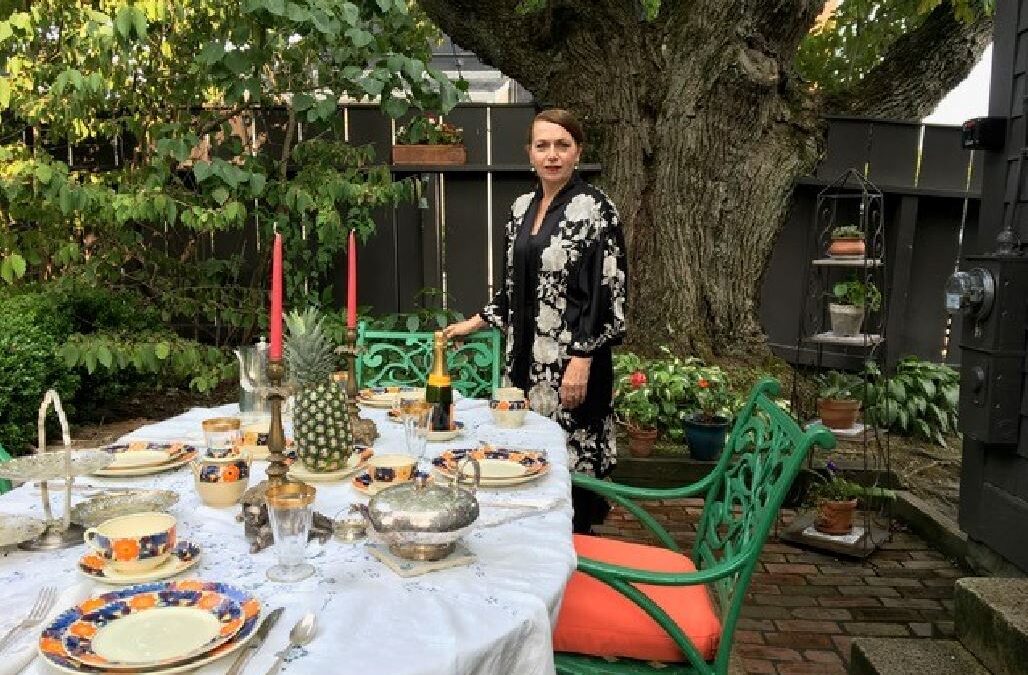
by NRF User | May 18, 2021 | NRF News
My partner, David, and I feel so blessed and fortunate to reside in a living piece of history – one of the exquisite Newport Restoration Foundation (NRF) historic houses.
We have been living in the John Davis House (c. 1804) at 68 William Street for the last 23 years. It has really been such a unique opportunity and experience. Not only do we reside in one of the most beautiful cities in the world, surrounded by sea, sun and sky, but we are also part of American colonial history.
The John Davis House is one of the over 70 properties restored by NRF, cared for by restoration experts, and stewarded by their tenants. Nowhere else in the world could we be afforded this same opportunity. Doris Duke’s brilliant vision to create this wonderful preservation foundation has made a dream come true for us and preserved the most examples of colonial architecture in America in one city, Newport.
Each of the NRF houses has its own unique history and story. My little house called me away from New York City—a city I never thought I would leave. But, while working on assignments for our specialized lighting business at local Newport museums, David and I were introduced to Newport with its glorious narrow streets, colonial architecture and neighborhoods. We fell in love with the city!
During one of our business trips to Newport, we walked by the John Davis House and noticed a plaque, which included the house name, year and the initials “NRF” on it. Through a window, I saw a man sitting in the living room. We knocked on the front door. The man who answered the door was a Newport historian. I asked him to “tell us about all these houses with the NRF plaques?” He invited us in and told us about Doris Duke and the concept of the NRF.
He found the foundation’s phone number in the yellow pages for us (this was before the Internet!) and said the houses are all rental properties and that one needed to apply.
I returned to NYC and got back into the hurried pace of the city and forgot to apply. Months later, after reading a New York Times article about Doris Duke and her NRF project, I immediately sent for an application, filled it out and submitted it. Within two weeks of applying, I received a call from the NRF offices informing me that a small house, the John Davis House at 68 William Street, was available and asked when I would like to see it. I told them I’d already been in the house and loved it. David and I instantly decided to move to Newport! Just like that. It was the best decision of our lives. It provided us with the best of both worlds—to live and work in Newport with clients in New York, Boston and all over the nation. We have never looked back!
It has been simply a dream come true to live in the John Davis House, which has become our home and working environment. Over the years, there have been unusual connections between this house and the people we have come to know. We have met two previous stewards who lived in the property as well as another couple who actually studied and measured the John Davis House over decades and recreated its proportions in their home in Massachusetts. This couple have become one of our most treasured friends. It is amazing the unique connections which have been made, bringing us together through this wonderful house. There is something gloriously mysterious about how these properties continue to make their own history richer as the years go by.
In addition to living in this beautiful house right in the heart of Newport, we have created a secret garden. Over the past two decades we have gradually planted many trees, perennials and annuals, and built a small koi pond, creating a dreamy little special hidden garden where we can enjoy nature in an urban environment and host magical lunches for friends and business colleagues.
Somehow, these historic houses select their stewards to ensure that their history will be carried on in a lively, loving fashion.
By Sandra Liotus and Sir David Crampton Barden
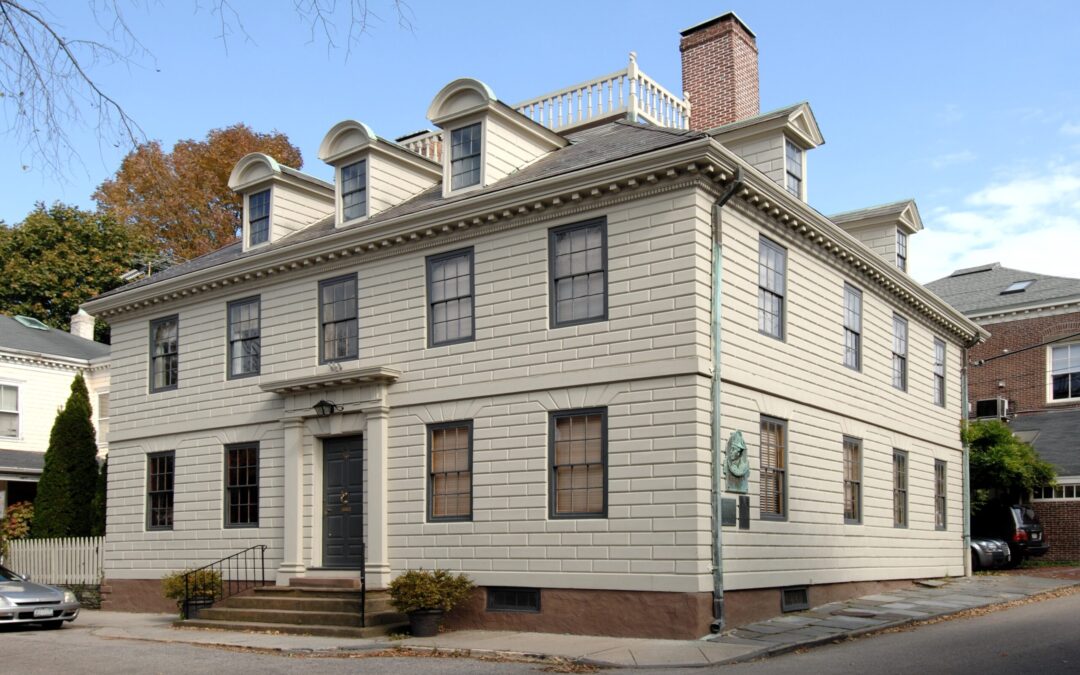
by NRF User | May 10, 2021 | NRF News
In the Fall of 2020, the Newport Restoration Foundation (NRF) embarked on a historic structures report (HSR) at the William Vernon House (46 Clarke Street). The process has literally taken NRF behind the walls, and beneath the floorboards, to gain a deeper understanding of the building’s history.
Before the HSR, the history of the Vernon House was largely limited to what could be learned from archival research or gleaned through observations of the house’s extant conditions. Through the combined efforts of techniques such as building archeology, paint analysis, and dendrochronology, a much richer history has been uncovered.
Take the northwest attic room as an example. By carefully removing floorboards, the HSR team uncovered original carpenter’s marks. In Colonial timber-frame construction, each joint is custom cut and these carpenter’s marks, or marriage marks, ensure that the timbers prepared for the house are assembled in the correct locations when brought on site. These marks are seen throughout the Vernon House, but not always intact. In the northwest attic room, however, they are still in numerical order (i.e. I, II, III, etc.), meaning they are in their original location and therefore likely representative of the earliest iteration of the house (c. 1708), before it was expanded to its present size.
Just down the hall, the removal of additional floorboards revealed whitewash and black paint that appears to delineate an earlier staircase. The function of this staircase is still unknown. Could it have served as a passageway for servants or enslaved people from the attic to a lean-to kitchen addition, no longer extant? Or, did it run alongside a chimney that once existed in the center of the house? No matter what conclusion is drawn by the HSR team, the scar of this staircase provides insight into the original floorplan and how the occupants moved within the house.
Traveling downstairs to the second floor, selective removal of wooden baseboards demonstrated that there was once a black mopboard (or, plaster painted black to depict a faux baseboard). This finish is seen throughout the house, even on top of the chinoiserie panels in the northwest parlor on the first floor. This indicates that before the installation of the elaborate millwork seen today, there was a period of time in which the house was finished with much simpler details.
Finally, in the northwest parlor on the first floor, where the famous painted chinoiserie murals are located, untouched mural remnants were found below the windows, behind the window seats. This evidence indicates that the murals were more extensive than what exists today, helping one envision what the room may have looked like in the early-eighteenth century.
These examples provide just a quick glimpse into the discoveries being made at the Vernon House, and the immense value that careful research and investigation bring to preservation and stewardship efforts.
The journey to uncovering Vernon House is just beginning! Click here to learn more about the HSR findings through our latest video series and learn how to get involved.
By Alyssa Lozupone, Director of Preservation at Newport Restoration Foundation
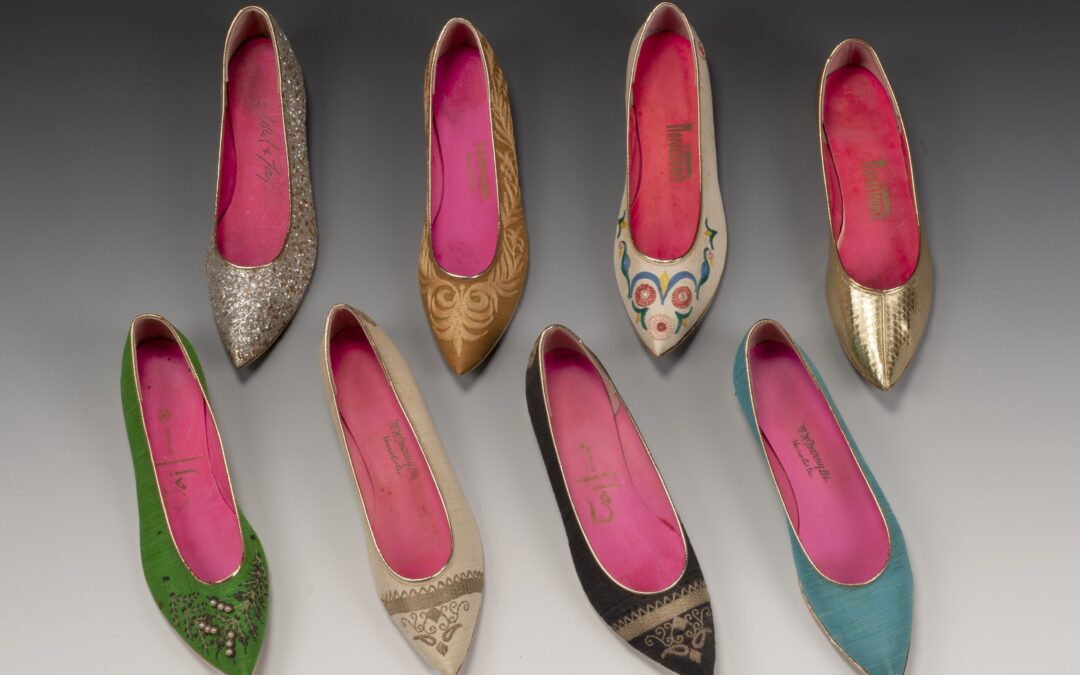
by NRF User | May 6, 2021 | NRF News
When someone asks me what some of the more interesting things in Doris Duke’s fashion collection are my usual answer is how many lesser-known designers are in it. This is a bit misleading because Doris Duke did have a fair amount of high-end, couture, and custom fashions in her Rough Point closets from big name designers that you would think of like Christian Dior and Balenciaga. I think the diverse range of designers in her wardrobe speak to Doris’s independence and her interest in supporting up and coming artists, both in the fashion world and as she did through her philanthropy within the music and dance world.
For a 1981 Met Gala (before Anna Wintour made it THE fashion event of the year), Duke chose to wear a relatively unknown designer, Dimitri Kritsas (born late 1930s), a fashion designer from Greece with only a small New York boutique. We don’t know how Doris Duke came upon the designer, but she made a big decision to wear his gown that evening and chose to be photographed wearing it.
Tina Leser (1910-1986), an American designer who is becoming more recognized in scholarly fashion history circles in the last decade or so, was clearly one of Doris Duke’s favorites. There are over a dozen items from Leser in the collection that span the range of her career and Doris’s life. It is possible the two women knew each other as they both spent considerable time in Honolulu prior to World War II; Leser and Duke likely would have been a part of the same social circles. There is still more research to be conducted on the extent of their relationship, including how long Doris was a client of the designer (much of Leser’s company archives are housed at the FIDM Museum in Los Angeles). Leser’s design aesthetic fits well into Doris’s jet set lifestyle, interest in Eastern aesthetics, and the casual elegance of caftans, robes, and sundresses.
Some of the lesser-known designers in the Doris Duke fashion collection are items purchased on her world travels. Many of these items represent traditional dress of countries she visited, especially in Southeast Asia where Doris Duke spent considerable time in the 1960s and 1970s to build a collection of Southeast Asian art. Star of Siam (founded 1955 by Americans Vera & Lewis Cykman) was a Bangkok, Thailand-based silk company that specialized in custom tailored clothing in the Thai style. There are close to twenty pieces of fashion from this company, as well as many yards of Thai silk used in upholstery around Doris Duke’s homes, including the curtains in Doris’s bedroom at Rough Point.
Taj of India (founded 1950) is perhaps one of the most fascinating lesser-known designers in Doris Duke’s closet—a maker of a pair of shoes so beloved by Doris, she owned over 20 pairs of the pointy-toe flats in almost every color available! Taj Tajerie, a female designer from India, created the brand. Doris purchased them from small boutiques and well-known department stores both in Hawaii and in New York like M. M. Merry, Ltd. and Nordstrom. A fun fact about this brand- the designer created all the shoes for the show I Dream of Jeannie!
There’s an old adage that you can learn a lot about people of the past through looking at their clothes. If you look at the many items of Doris Duke’s clothing collection, you would learn that her clothing is almost as eccentric as the woman herself – and these pieces hold many memories and stories we are still learning about today.
By Kristen Costa, Senior Curator at Newport Restoration Foundation






